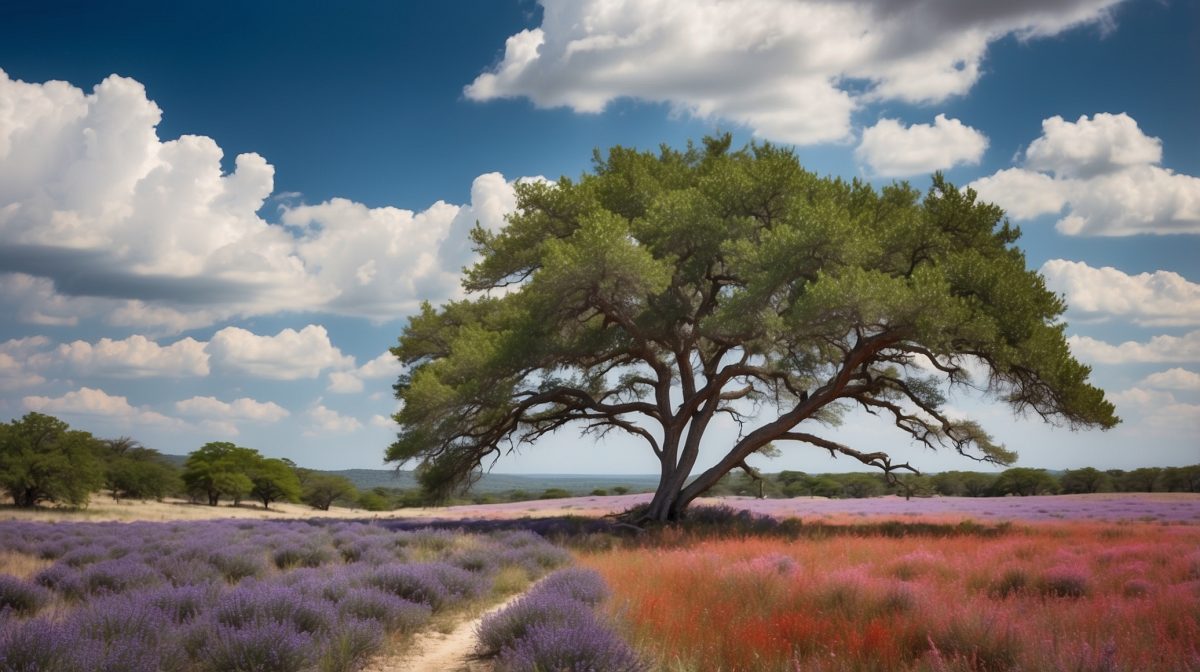Now, understandin’ the local flora is mighty important, y’all. It contributes to the area’s natural beauty, sure, but it also plays a big role in our ecosystem. These cedars, or junipers as the botanists like to call ’em, they’re a key piece of what makes the Hill Country tick. So, let’s dive in and get to know these steadfast companions a little better.
The Cedars of Texas Hill Country
When we talk about the cedars here in the Hill Country, we’re generally talkin’ ’bout a couple of different trees that, truth be told, are actually junipers. It’s a bit of local lingo, you see. The most famous of these is the Ashe juniper, or what we often call the “mountain cedar.” This hardy tree is known for its dense, dark green foliage and its ability to thrive in our rocky soil.
Then there’s the Eastern red cedar, another native that’s made its home in these parts. This one’s a bit different from its cousin, with a reddish bark and a penchant for growin’ in more varied soils. It’s been used for all sorts of things ’round here, from sturdy fence posts for keepin’ in the cattle, to fine furniture that shows off the wood’s rich color and grain.
The Significance of Cedar in Texas Hill Country
Now, these cedars ain’t just for show. They’ve been used by folks in these parts for generations. Native Americans once used ’em for medicine and crafting, and the early Texan homesteaders, well, they knew the value of a good cedar post. There’s a rich history here, with these trees playin’ a part in the stories and lives of those who came before us.
On the economic side of things, cedar’s a big deal too. We’re talkin’ woodworking, essential oil production – you name it. But it ain’t all sunshine and rainbows; there are environmental concerns to consider. Cedars can be thirsty trees, and in a land where water’s as precious as gold, that’s a matter for debate. And then there’s the issue of brush management, with folks dividin’ over how best to handle these widespread trees.
Cedar Management and Conservation
Speakin’ of management, places like JL Bar Ranch Resort are right at the forefront, usin’ savvy strategies to keep cedar populations in check while still maintainin’ the land’s natural beauty. They’re workin’ with nature, usin’ methods like controlled burns and selective clearing to ensure that the Hill Country stays healthy and vibrant for generations to come.
These methods ain’t just good for the land; they’re good for us, too. By managin’ the cedars right, we can protect our water resources and preserve the habitat for all the critters that call this place home. It’s all about findin’ that balance, so that we can enjoy the benefits of these trees without lettin’ ’em take over.
Enjoying the Cedars Responsibly
Now, if you’re lookin’ to enjoy these majestic cedars, there’s a right way to do it. First off, when you’re out there takin’ pictures or just breathin’ in that clean Hill Country air, remember to respect the land. Stick to the trails, and don’t go disturbin’ the natural habitat – these trees are a part of it, after all.
And if you’re hankerin’ for a bit more of an adventure, places like JL Bar Ranch Resort offer all sorts of ways to get up close and personal with the cedars. We’re talkin’ hikin’, bird watchin’, and nature walks that’ll give you a front-row seat to the splendor of these trees. It’s a chance to connect with the land and see why we’re so proud of our cedars.
Conclusion
So there you have it, friends. The cedars of Texas Hill Country are more than just trees – they’re a part of our identity, a symbol of the resilience and spirit of this place we call home. It’s up to all of us to preserve this part of our heritage, to keep it thrivin’ for our kiddos and their kiddos after that.
I encourage y’all to keep learnin’ and appreciatin’ these rugged beauties. Whether you’re a local or just passin’ through, take a moment to tip your hat to these steadfast trees. They’re the backbone of the Texas Hill Country, and they deserve our respect and care.
FAQs
Why do people often confuse Ashe juniper with cedar?
Well, it’s mostly ’cause of the way they look and smell. Around these parts, we’ve been callin’ ’em cedars for so long that the name just stuck, even though they’re technically junipers.
Can cedar trees be harmful to the environment?
Like anythin’, too much of a good thing can be bad. Cedars can use up a fair bit of water and crowd out other plants if not managed properly, so it’s all about balance.
How do cedars affect local wildlife in Texas Hill Country?
Cedars provide habitat and cover for wildlife, but they can also dominate an area, which can be a problem for biodiversity. That’s why we work to keep ’em in check.
What is “cedar fever,” and how is it related to the trees here?
“Cedar fever” is an allergic reaction to the pollen from our Ashe junipers. Come winter, the air’s full of it, and for some folks, it can really stir up the allergies.
Are there any cedar-related festivals or events in Texas Hill Country?
Yes, indeed. We celebrate our local flora and fauna with various events throughout the year, includin’ some that honor our beloved cedars.


